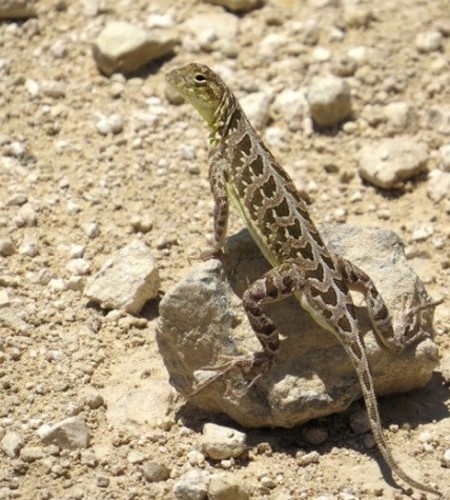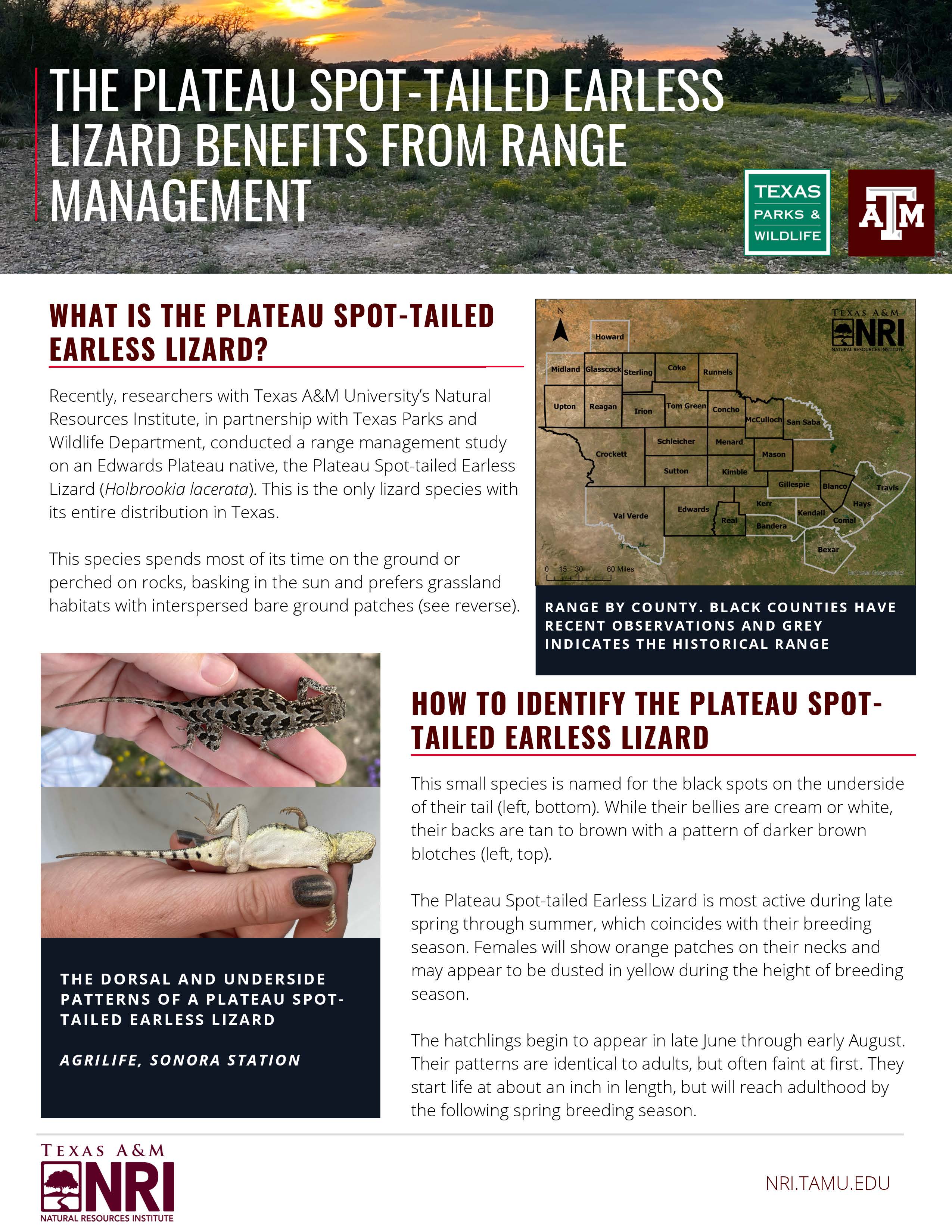

The spot-tailed earless lizard is thought to be declining throughout its range. Because current information on the abundance and structure of the lizard populations in Texas is lacking, development of a species status assessment and comprehensive conservation management plan was needed.
Current efforts include conducting distribution-wide road surveys for the lizard within potentially suitable habitat, based on historical records and model input. Survey results are used to validate and refine existing habitat models.
NRI scientists measured the genetic connectivity of the lizard populations in Texas and identified potential conservation units within the state. Tissue samples collected from all captured/released or road-killed lizards during the statewide survey calculated genetic differentiation among lizard populations.
Finally, NRI scientist, using radio-telemetry and mark-recapture methods, determined fine-scale habitat requirements, movement and activity patterns, and population density estimates for the lizard management areas.
By filling key gaps in the lizard's biology through applied research, information serves to assist U.S. Fish and Wildlife Service in making a listing determination based on current and best-available scientific data.
For more information, see USFWS Species profile and iNaturalist species profile.


Download "The Plateau Spot-Tailed Earless Lizard Benefits from Range Management" here.
-
Natural history of the spot-tailed earless lizards (Holbrookia lacerata and H. subcaudalis)
Sep 2021
Toby J. Hibbitts, Danielle K. Walkup, Travis J. LaDuc, Brad D. Wolaver, Jon Paul Pierre, Mike Duran, Dalton Neuharth, Shelby Frizzell, Connor S. Adams, Timothy E. Johnson, Danny Yandell, and Wade A. Ryberg -
Natural History Notes 49 Holbrookia Lacerata (Spot-tailed Earless Lizard) Predation
Dec 2018
Danielle K. Walkup, Connor S. Adams, Wade A. Ryberg, Toby J. Hibbitts -
Natural History Notes Holbrookia lacerata (Spot-tailed Earless Lizard) Burying Behavior
Sep 2018
Neuharth, D., D.K. Walkup, S. Frizzell, J. Kachel, C.S. Adams, T. Johnson, T.J. Hibbitts, and W.A. Ryberg -
Natural History Notes Holbrookia lacerata (Spot-tailed Earless Lizard) Predation
Sep 2018
Neuharth, D., S. Frizzell, W.A. Ryberg, and T.J. Hibbitts





